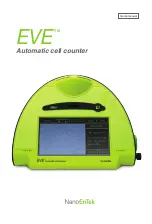
16
CRU Addressing
CRU addressing is a method which allows multiple I/O bits to be interfaced on three lines (CRUIN, CRUOUT
and CRUCLK). The 9995 is capable of interfacing up to 32K bits, although only a small amount are actually
used on MPS2.
Four main units are addressed via CRU and their enable lines are generated by circuitry within ULA 1 IC15
ENO, 1, 2 and 3.
Again as in the memory mapped I/O the CRU enable lines are also disabled via the I/O select disable line, IC15
pin 8. Thus, the full CRU address range is also available from an external source and interfacing of extern al
CRU functions is very simple. The use of this line requires minimal decoding logic on the main board, since the
CRU addresses are allowed to repeat themselves. This then allows simple enable logic to be used in a stand
alone system, thus reducing the cost of the main board.
The CRU enable lines are used for the following functions:
A. ENO - Serial Link 0
ENO is used to enable one of the two on-board UART's, IC5. This UART is used as the interface to a
printer or security system.
B. ENI - Interrupt Status (Internal to the ULA) ENI is used to enable the read/write logic associated with the
interrupt latches within the system. Using a CRU read instruction, ENI allows the reading of the interrupt
status lines, whereas usually a CRU write instruction allows the resetting of an addressed interrupt latch.
The operation of this logic will be dealt with in the section covering interrupts.
C. EN2 - Serial Link 1 EN2 is used to enable the UART, which communicates with the on-board reel drive
processor. This processor will be dealt with in its relevant section.
D. EN3 - System Function Lines (Internal to the ULA) EN3 is used to write eight bits of CRU allocated to
system functions.
The functions with their uses are as follows:
(1) BB/PTR - Internal to IC15. This line is used to direct serial information from UART 0 IC6 to either
the black box (if low) or to the printer (if high).
(2) I/O Enable - IC15 pin 38. This line is used to enable the peripheral devices selected from SEL 0,
SEL 1 , SEL 2 and SEL 3. It's normal state is high, but will go low under reset conditions.
(3) Reel Drive Enable - IC15 pin 39. This line is used to enable the reel drive processor. lts normal state is
high (i.e. processor enabled).
(4) NMI EN - Internal to IC15. This line is used to disable the generation of the NMI interrupts. lts normal
state is high, but it goes low to inhibit NMI interrupts.
(5) Alarm - IC15 pin 34. This line is capacitively coupled into the amplifier system to generate an alarm
sound. An alarm is produced when this line to toggled.
(6) RAM Enable - IC15 pin 33. This line is used to enable and disable the RAM under program control. lts
normal enabled state is high.
(7) Watchdog Strobe - Internal to IC15. This line is toggled to retrigger the watchdog circuitry.
Summary of Contents for MPS2
Page 2: ...2 ...
Page 10: ...7 ...
Page 15: ...12 ...
Page 16: ...13 ...
Page 17: ...14 ...
Page 24: ...21 ...
Page 25: ...22 ...
Page 26: ...23 ...
Page 27: ...24 ...
Page 28: ...25 ...
Page 29: ...26 ...
Page 30: ...27 ...
Page 31: ...28 ...
Page 34: ...31 ...
Page 35: ...32 ...
Page 36: ...33 ...
Page 38: ...35 ...
Page 39: ...36 ...
Page 40: ...37 ...
Page 41: ...38 ...
Page 42: ...39 ...
Page 43: ...40 ...
Page 45: ...42 ...
Page 46: ...43 ...
Page 47: ...44 ...
Page 48: ...45 ...
Page 49: ...46 ...
Page 50: ...47 ...
Page 51: ...48 ...
Page 52: ...49 ...
Page 53: ...50 ...
Page 54: ...51 ...
Page 55: ...52 ...
Page 56: ...53 ...
Page 57: ...54 ...













































